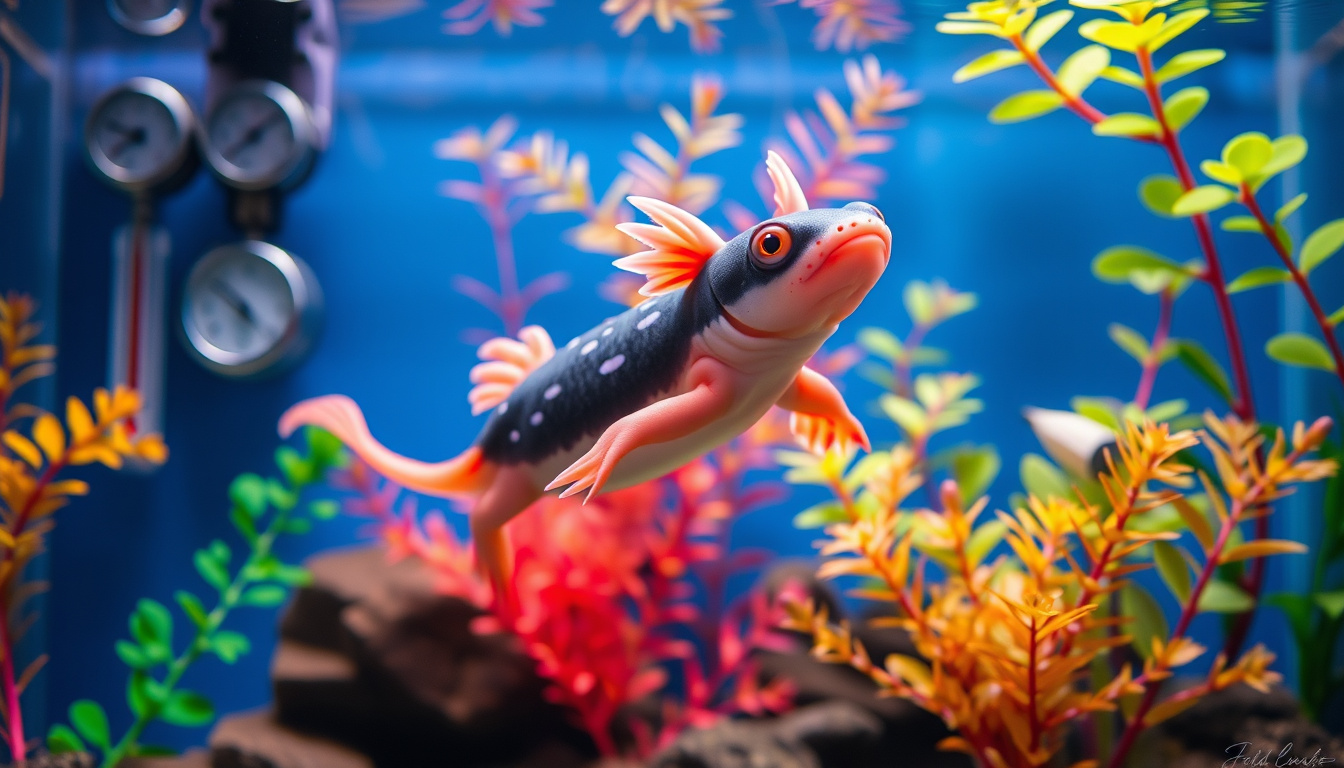If you’re looking to keep axolotls as pets, understanding axolotl temperature control is crucial for their health and happiness.
These fascinating amphibians thrive in specific environmental conditions, and temperature is one of the most important factors to consider.
In this article, we’ll explore the ideal temperature ranges for axolotls, discuss how temperature can impact their health, and provide you with practical tips and tools to ensure a comfortable home for your axolotl.


Adjusting Water Temperature: Methods and Techniques
If you’re diving into the captivating world of axolotls, understanding axolotl temperature control is crucial for their health and well-being.
These aquatic wonders thrive in cooler waters, ideally between 16°C and 18°C (60°F to 64°F).
To achieve the perfect temperature, there are several methods and techniques you can employ.
First, consider using a high-quality aquarium thermometer to monitor your axolotl’s environment closely.
Next, make adjustments with a water chiller, specifically designed for aquariums, which helps maintain a stable temperature, crucial during warmer months.
Alternatively, if you’re on a budget, placement of the tank in a cooler area of your home, or having a fan blowing across the water’s surface, can also help reduce temperatures.
Regular water changes with chilled water can also play a role in effective axolotl temperature control.
Lastly, research potential heating pads (used sparingly and carefully) for colder months, ensuring they do not raise the water temperature above the recommended levels.
By mastering these techniques, you’ll ensure your axolotl remains happy and healthy in its aquatic habitat.
Signs of Temperature Stress in Axolotls
Axolotls are fascinating creatures, often captivating the attention of young enthusiasts and budding aquarists alike.
However, one crucial aspect of axolotl care that is essential to their health is understanding axolotl temperature control.
When the temperature of their aquatic environment is not within the ideal range, typically between 60°F to 68°F (15°C to 20°C), these amphibians can easily fall victim to temperature stress.
Signs of this distress include lethargy, loss of appetite, visible stress marks (darkening of their skin), and unusual swimming patterns, such as excessive floating or sinking.
By regularly monitoring the water temperature and ensuring stable conditions, you can help your axolotl thrive in a happy and healthy environment.
Taking the time to learn about and implement axolotl temperature control not only protects these unique pets but also deepens your understanding of their care, fostering a rewarding relationship with your aquatic friend.
Frequently Asked Questions
What is the ideal temperature range for axolotls?
The ideal temperature range for axolotls is typically between 60°F to 68°F (15°C to 20°C).
Keeping the temperature within this range helps promote optimal health and activity.
How does temperature affect axolotl health?
Temperature plays a crucial role in axolotl health.
Extreme temperatures can lead to stress, reduced immune function, and even serious health issues like metabolic disturbances and respiratory problems.
What tools can I use to monitor the temperature of my axolotl’s water?
You can use aquarium thermometers, either digital or analog, to monitor the water temperature accurately.
Additionally, temperature controllers can help maintain a stable environment.
What methods can I use to adjust the water temperature in my axolotl tank?
To adjust water temperature, you can use an aquarium heater for warming and ice packs or chillers for cooling.
Always make adjustments gradually to avoid shocking your axolotl.
What are the signs of temperature stress in axolotls?
Signs of temperature stress in axolotls may include lethargy, loss of appetite, abnormal swimming patterns, and unusual skin coloration.
If observed, it is important to check and adjust the water temperature immediately.
[center][/center]
[center][color=rgb(10, 10, 10)][highlight=rgb(255, 248, 231)] [/highlight][/color][color=rgb(10, 10, 10)][highlight=rgb(255, 248, 231)]As an Amazon Affiliate,[/highlight][/color][color=rgb(10, 10, 10)][highlight=rgb(255, 248, 231)] [/highlight][/color][color=rgb(10, 10, 10)][highlight=rgb(255, 248, 231)]Savvy Keto makes a commission[/highlight][/color][color=rgb(10, 10, 10)][highlight=rgb(255, 248, 231)] [/highlight][/color][color=rgb(10, 10, 10)][highlight=rgb(255, 248, 231)](at no extra cost to you)[/highlight][/color][color=rgb(10, 10, 10)][highlight=rgb(255, 248, 231)] [/highlight][/color][color=rgb(10, 10, 10)][highlight=rgb(255, 248, 231)]on purchases you make[/highlight][/color][color=rgb(10, 10, 10)][highlight=rgb(255, 248, 231)] [/highlight][/color][color=rgb(10, 10, 10)][highlight=rgb(255, 248, 231)]thru links on this site.[/highlight][/color][/center]

